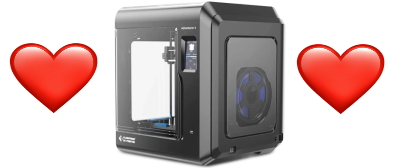Unofficial home for collections of profile settings files, guides, FAQ´s, advices, best practices - for owners of the Flashforge Adventurer 4.
- Browse the folders in this repository and read/download the files you need.
- If you´re not used to Git or Github, see the section below.
- See the "wiki" tab
- See the "issues" tab, search for your problem or create an issue
- See the "discussions
If you´re not used to Github that´s completely fine. You can edit or add stuff right here! Just look for the Edit or the Upload buttons. Someone can then review the changes and pull these into the repository (this place) after having a look, so that everybody else then can see your contribution.
There's also the wiki, discussions and issues. See the respective tab, and help out there.
If you want to learn Github, see below.
- https://www.flashforge.com/product-detail/flashforge-adventurer-4-3d-printer - this is our machine!
Beware, it's rather complex!
Git is basically a file system for text files that allow people to work together without overwriting each others stuff. This system keep track of changes of files and version these. Git is meant to allow collaboration of projects containing code or text. Github is a service that offer free usage of Git on their cloud. See the section "New to github?" down below for more help.
- Git = Software used to enable collaboration between several people working on stuff like code, text files etc.
- Github = A website providing Git to their users. It's where You are right now! They also offer free wiki, discussion pages, issue tracker and more.
- Repository = It's what this "space" is called. Our part of the Github. A place to store stuff in, e.g files, code, images and other. What's here is in the cloud, it's public and won´t disappear.
- Clone = This operations lets you download the current version of the Repository to your local harddrive. Here you can use the files, change them, and even upload them to share your improvements! Great, huh? :)
- Commit = Isn´t enough to just save the changes you've done. These need to be "commited" before they are "pushed" and "pulled into" the repository. Don´t worry, if
- Push = When changes to files that you have only locally, these needs to be pushed and commited to the repository so that other people can enjoy them. This may be done in several ways. Best bet if you're new is to google for "commit and push to github".
- Pull Request (PR) = When uploading or writing changes - someone (the administrators) need to review the changes and accept or reject them before the changes are "pulled in". So you "request" the admins to "pull" in the code. This can be done by either editing something directly on this site, or by "pushing" the changes you have saved and commited locally.
- Branches = Many people can work on different versions in many files at once. So they can have their own "branches" from the "root" of the tree. A bit complex so unless this way of working is preferred, google is the safer bet. :)
